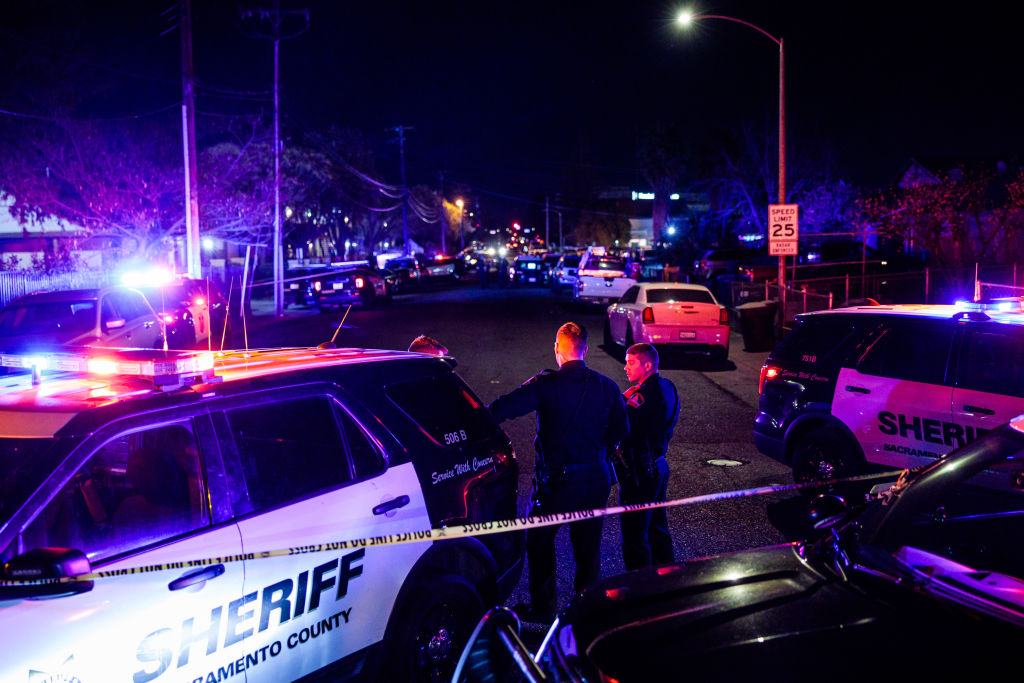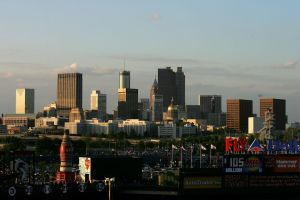A shoot-out in downtown Sacramento, California, at two in the morning on Sunday, April 3 left six people dead and injured at least twelve. It might or might not have been gang warfare. The facts are still unfolding.
One of the shooters, Smiley Martin, twenty-seven, was out of jail on early release against the advice of the Sacramento county district attorney. “He poses a significant, unreasonable risk of safety to the community,” authorities said, opposing Martin’s release from state prison.
“Inmate Martin has, for his entire adult life, displayed a pattern of criminal behavior,” wrote Deputy District Attorney Danielle Abildgaard. “His history indicates that he will pursue his own personal agenda regardless of the consequences and regulatory restraints placed upon him.” Martin “has no respect for others, for law enforcement or for the law. If he is released early, he will continue to break the law,” prosecutors concluded.
In spite of dire warnings, the Board of Parole Hearings released Martin in February 2022 on account of time-served formulas used by the state department of corrections and wider pressure for decarceration.
A few weeks before, it was Asaahdi Elijah Coleman, twenty-one, also a documented menace. He opened fire as passengers exited a Los Angeles-bound Greyhound bus during a scheduled stop in Oroville, California. Karin Dalton, forty-three, with her two teenage kids on the way to a “new life” in New Mexico, died at the scene. Coleman wounded four others, then ran off into the night. He was arrested, naked, inside a Walmart after getting into a fight, according to the Associated Press.
Coleman had a warrant for his arrest on a firearm possessions charge and a probation violation out of Alameda County as well as an undisclosed juvenile record.
In Sacramento’s aftermath, whoever is scripting President Joe Biden reiterated a call for stronger gun regulations to ban ghost guns, require background checks for all gun sales and ban assault weapons and high-capacity magazines. None of this is new — and some of it makes sense.
The White House statement concluded shamelessly: “Pass my budget proposal, which would give cities more of the funding they need to fund the police and fund the crime prevention and intervention strategies that can make our cities safer.” After years of municipal anarchy, what nerve.
In the same spirit, a pro forma press release from California governor Gavin Newsom declared, “The scourge of gun violence continues to be a crisis in our country, and we must resolve to bring an end to this carnage.”
How, Gavin, how at this late date, just how? Is one more round of restorative justice the ticket? Let’s start with Smiley, but pending his redemption, let’s also consider the root of the problem, leaving aside welfare-fueled evil, debauchery and despair.
While outlaws and bandits come in all colors, a striking number of them are young and black. In 2019, before the current crime wave, young black males from fifteen to thirty-four, who make up 2 percent of the population, accounted for 37 percent of all gun homicide fatalities.
Low-lives and bad apples of all ages and colors are now aware that the heat is off, that police tread gingerly out of self-interest and legal self-protection. As long as outlaws feel resisting arrest and menacing police is a constitutional right — or at least works — municipal lawlessness will escalate.
No doubt the US is awash in legal and illegal guns. About one third of the nation’s adults own a licensed, legal gun. No one knows how many illegal weapons are out there ready for sale by traffickers. Lots — and it’s a major social problem, concentrated in America’s seamy cellar.
Democratic officials and their media are more than willing to weave together gun violence and white nationalism, as in the Department of Justice’s Capitol breach cases. Yet it will not address the problem of felony crimes causing rising metro fear.
Biden’s handlers and their captive media keep trying to tune Americans to a particular channel, going after gun manufacturers, moving the problem from user to maker, repealing manufacturers’ immunity from liability. Putting Smith & Wesson and Remington out of business is no real solution, especially when arms are a thriving world market. The horse is out of the barn.
Packing a gun gives power thrills to a certain kind of male personality: I can blow you away, sucker. Concealed carry is asking for trouble. But the right-wingers that so bedevil Biden are usually armed defensively, worrying about threats to their liberty or confiscation of their fetishized guns. They are don’t-tread-on-me, and my-home-is-my-castle, perhaps with a garage full of canned goods, awaiting doomsday. Second Amendment absolutists might be far-out or obnoxious, but they rarely shoot up a crowd at two in the morning or a busload of innocent strangers in a fit of paranoia. If they do, the incident is amplified in behalf of the gun-violence narrative.
Can Nancy Pelosi, kneeling in her kente cloth, Merrick Garland, or the Northern California district court begin to help set things right? Can elected and legal mighties even imagine the harvest of sadness that their evasions and fictions have brought upon the innocent? The Karin Daltons are little people, struggling and invisible, of no political use to blue-state Democrats. They are riding the Greyhound, not on a personal jet somewhere in the skies between Georgetown and Pacific Heights. One-day news stories, their shattered lives disappear into the hole of progressive narrative.
Functional Americans across the political spectrum see governments and courts at all levels accommodating lawlessness. This can’t go on, they say, or can it? They behold a society hardened by distrust and predation, in the hands of highly partisan forces actively rearranging morality, abolishing civic standards, and deforming childhood.
Americans of all backgrounds are seeking safety, trust and civic order. They are walling themselves off from crazies and marauders, or trying, moving to safe havens, maybe across town, but if need be, to other states and regions. This normative pursuit has begun and might be accelerating. It is why law and order will be a potent political charm and rallying cry in this year’s elections nationwide.


















